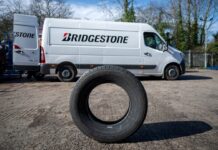The pandemic hit the light commercial vehicle (LCV) industry like a bolt out of the blue. Production lines ground to a halt with limited volumes of new vehicles entering the country whilst the sale of used stock in the UK ceased. The first time the industry had come to a complete standstill since the Second World War, writes Dave Hill, Glass’s Light Commercial Vehicle Editor.
Whilst dealerships and auction houses remained closed, there were minimal numbers of new registrations during April 2020. ‘Click and collect’ was the only way to get essential new and used LCVs to the NHS and the wider buyer base. To move items efficiently and in bulk, LCVs were needed and plenty of them. The shortage of new stock meant that there was a huge spike in demand for used LCVs, both from the wholesale market and from rental companies.

A year later and the UK is beginning to see a light at the end of a very long tunnel. The vaccination rollout has been quick and effective in easing personal restrictions. Due to lockdowns across Europe, the supply of parts to manufacturers and the production of finished vehicles, has been slow and at time intermittent. This in turn has forced fleets to retain their current fleets longer than expected, creating a shortage of used LCVs in the market.
The mainstay of used LCV supply in the UK market has always been the auction houses. Over the last twelve months, they have adapted quickly to a new way of remarketing vehicles.
Historically, it was possible to tell what day of the week it was by the auction centre you were attending. The vans would be lined up in rows and each van would be driven into the auction hall and sold physically, with the sale relayed to online buyers to bid on. Fast forward to April 2020 and the pandemic had locked down the country. No public gatherings were permitted and the sale of used LCVs had all but stopped, although demand was sky-high.
Auctions
Online auctions for used LCVs started in 2002, always playing a supporting role to physical auctions. Each year, online popularity has increased and before the pandemic made up nearly 50% of all sales. The change to 100% online sales during the pandemic proved an instant success. With images and inspection reports used to support vehicle sales, the vehicles themselves no longer needed to be at the sale site. The gradual increase in online sales would have continued over the coming years if there had been no pandemic, but the restriction on movement and demand for vehicles has accelerated this change.
Positives
There are so many positives to 100% online sales:
-Reduced vehicle movements at auction – better for the environment
-Buyers no longer need to be at auction – better for the environment, reduction in costs
-Vendor movement of vehicles to auction site eliminated – better for the environment, cost savings
-Trade buyers able to view multiple online sales at the same time
-More relaxed buying/selling experience
-Vendor representation at most online sales – quicker decisions on bids
Adjusting
Understandably, some aspects of online sales will take time to adjust to as buyers fully embrace this change. These are mainly:
-Buyers not being able to meet up in the halls to discuss the market
-Buyers not being able to touch, see and hear the vehicles as they are driven through the hall
-Not being able to assess any damage in real-time
Other important concerns, but easily remedied aspects relate to:
-Inadequate or poor quality images
-Incomplete mechanical inspection reports
-Incorrectly described vehicles
Buying Habits
As the UK starts to ease lockdown restrictions, the change in buying habits due to the pandemic has been noticeable. Production of new vans is struggling to keep up with demand forcing buyers into the used market. The lack of a normal supply of de-fleeted vans into the used market has meant that later year stock is at a premium. This has meant that there has been a significant upward realignment of used van values as demand continues to outstrip supply. The used light commercial vehicle sales arena has changed and this is the future.












